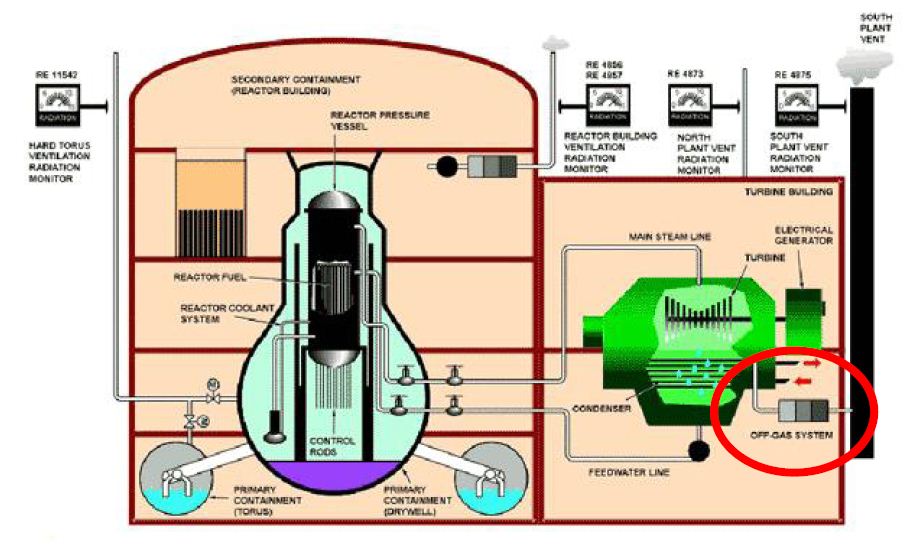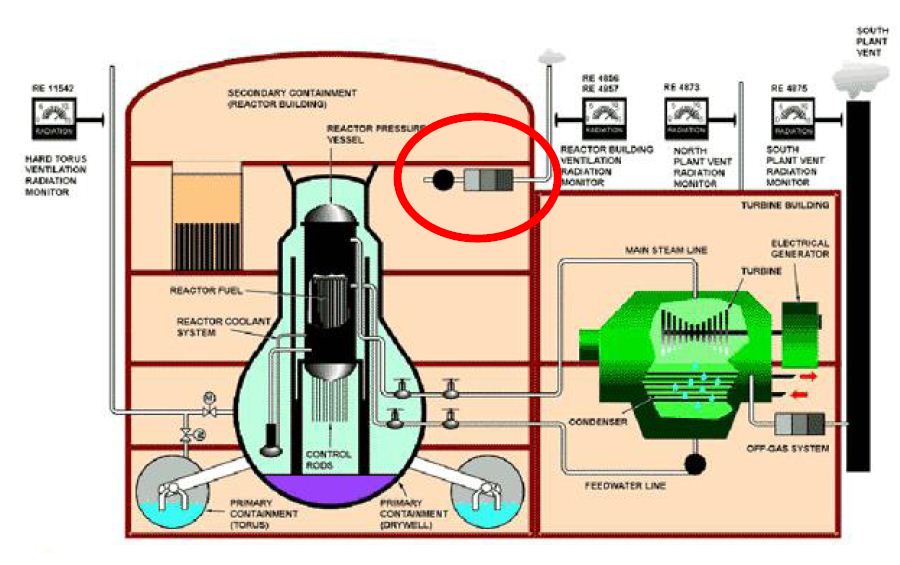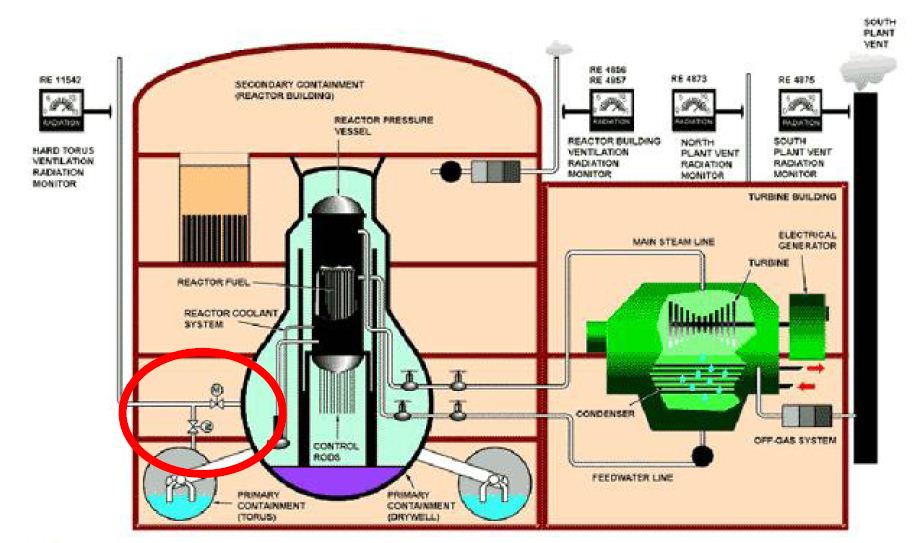Earlier this year, the Nuclear Regulatory Commission’s Commissioners voted 5-0 to order plant owners to implement three safety upgrades recommended by the NRC task force examining the Fukushima accident.
One of the upgrades involved installing reliable hardened containment vents for boiling water reactors (BWRs). Or, more accurately, the Commissioners required that the hardened containment vents that the NRC ordered 23 years ago now be made to work when needed to do so. (Why the original order didn’t include this seemingly important provision may be a topic for a later blog post.)
BWRs always had the ability to vent their containments. The original method routed the flow through a filter system before releasing it to the atmosphere. But this arrangement had a serious drawback – the pressure inside containment during severe accidents might be higher than the design pressure of the ducting to and from the filter system. If so, venting the containment could over-pressurize the filter system causing it to break open. Highly radioactive gases released from ruptured ductwork could in turn cause safety equipment to fail and impede efforts by plant workers responding to the accident.
So, the NRC ordered plant owners in 1989 to install hardened containment vents that could stand the high pressures that might occur during an accident.
But this arrangement had its own serious drawback – the valves and dampers connecting the containment airspace with its hardened vent pathway cannot open without electrical power and compressed air. Safety studies performed since the 1980s consistently concluded that accident sequences most likely to require venting the containment involve loss of electrical power and compressed air. So, the hardened containment vents would work during accidents, unless the accidents happened.
So, the NRC ordered plants owners in 2012 to make the hardened containment vents actually workable during accidents.
But this arrangement still has a serious drawback – to harden the containment venting system, the venting pipes were routed around the unhardened filter system and directly to the atmosphere. So if the reliable hardened containment vent is used during an accident, many people may pay a very high price. For while gases released from nuclear power plants during normal operation and during design basis accidents must, by NRC mandate, be filtered, the gases released during more serious accidents are not filtered.
At the NRC’s Regulatory Information Conference in March 2012, Commissioner Kristine Svinicki explained why she felt filters were not needed for the reliable hardened containment vents (see video below). Basically, Commissioner Svinicki believes the sequence of bad things that must happen in order to need a filter for containment vents is so long that it will never occur at a U.S. reactor.
But Commissioner Svinicki and all her colleagues unanimously voted to require owners to install reliable hardened containment vents. The long sequence of bad things that must happen before venting is exactly the same length whether the vents are filtered or not – neither one step longer nor one step shorter. Since the Commissioners believe – as demonstrated by their 5-0 vote – that the risk of accident justifies requiring reactors to have reliable hardened containment vents, then that very same risk justifies requiring filters on those vents, to deal with the radiation from the accident that the vents were needed for in the first place.
Conversely, if that risk is not high enough to require filtered venting, then it is also not high enough to require unfiltered venting.
Actually, the issue is wicked simple.
Under normal operating conditions, when BWRs operate above 5% power, gaseous releases are processed through high energy particulate air (HEPA) filters and charcoal filters that significantly reduce the radioactivity content discharged to the environment (Figure 1).
During design-basis accidents, gaseous releases from BWRs are processed through another system with HEPA and charcoal filters that significantly reduce radioactivity levels being discharged. The design objective of this filter system is to remove over 99% of the radioactive particles (Figure 2).
But during severe, or beyond-design-basis accidents, gases released via the BWR reliable hardened containment vents do not pass through HEPA filters or charcoal filters before being discharged (Figure 3).
So, when the radioactivity level to be released is as high as it ever gets, the absolute least amount of protection against it is provided (Figure 4). That’s indefensible – and all too simple to remedy.
In 1989, the NRC ordered BWR owners to install hardened containment vents.
In 2012, the NRC ordered BWR owners to install reliable hardened containment vents.
This leaves the NRC one order shy of getting it right.
The public is not protected by hardened containment vents.
The public is not protected by reliable hardened containment vents.
The public is only protected by filtered reliable hardened containment vents.
It may take the NRC three orders to get it right.
The NRC will not be serving the American public well if it takes 23 years or more to write and issue this third order. The NRC must get it right now.
If justice delayed is justice denied, filters delayed is protection denied.




